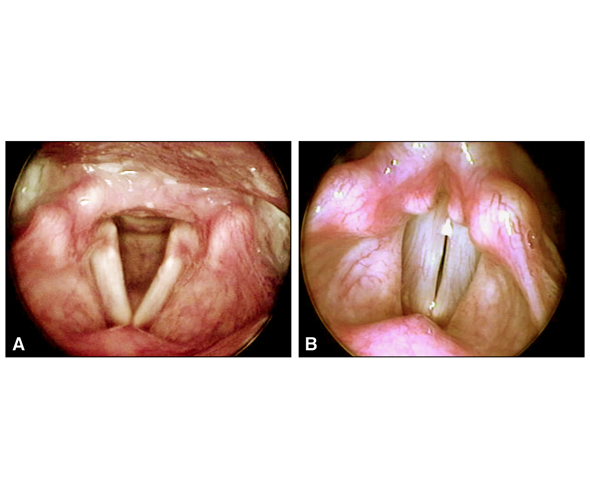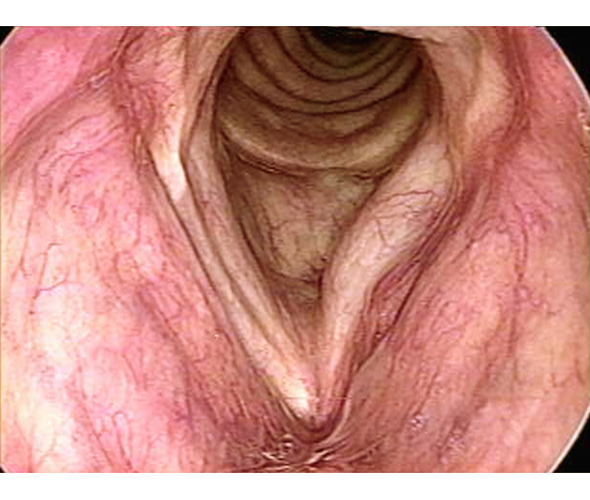1.
List the common symptoms of laryngopharyngeal reflux (LPR).
2.
Describe laryngoscopy findings in LPR. What is sandifer syndrome?
3.
What is laryngeal pseudosulcus? What is the significance of this finding? How does it differ from sulcus vergeture?
Reference(s):
Belafsky, P. C., Postma, G. N., & Koufman, J. A. (2002). The association between laryngeal pseudosulcus and laryngopharyngeal reflux. Otolaryngology–Head and Neck Surgery : Official Journal of American Academy of Otolaryngology-Head and Neck Surgery, 126(6), 649–652.
4.
Discuss the role of objective tests in the diagnosis of LPR.
Reference(s):
Kavitt R.T., Yuksel, E.S., Slaughter, J.C., Garrett, C.G, et al. (2013).The role of impedance monitoring in patients with extraesophageal symptoms. Laryngoscope,123(10):2463-8.
Gooi Z, Ishman, S.L., Bock, J.M., Blumin, J.H., Akst, L.M. (2014). Laryngopharyngeal reflux: paradigms for evaluation, diagnosis, and treatment. Ann Otol Rhinol Laryngol. 123(10), 677-85.
5.
How well do impedance pH testing relate to LPR symptoms?
Reference(s):
Jette, M. E., Gaumnitz, E. A., Birchall, M. A., Welham, N. V, & Thibeault, S. L. (2014). Correlation between Reflux and multichannel intraluminal impedance pH monitoring in untreated volunteers. The Laryngoscope, 124(10), 2345–2351.
6.
What behavior and lifestyle modifications are recommended in the medical treatment of LPR.
7.
What are the components of reflux?
8.
What is the difference between H2 blockers vs. PPI? Which would you prescribe for LPR? PPI should be prescribed at what frequency? What is the evidence for this practice?
9.
Describe your approach to the medical therapy of LPR. How much and how long? Explain persistent symptoms in patients on maximal medical therapy.
Reference(s):
Reichel, O., Dressel, H., Wiederanders, K., & Issing, W. J. (2008). Double-blind, placebo-controlled trial with esomeprazole for symptoms and signs associated with laryngopharyngeal reflux. Otolaryngology–Head and Neck Surgery : Official Journal of American Academy of Otolaryngology-Head and Neck Surgery, 139(3), 414–420.
10.
Discuss sequelae of chronic LPR.
Reference(s):
Maronia, N.C., Azadeh, H, Waugh, P, Hillel, A. (2001) Association of laryngopharyngeal reflux disease and subglottic stenosis. Ann Otol Rhinol Laryngol, 110(7 ), 606-12.
Sataloff, R.T.(2010). Gastroesophageal reflux-related chronic laryngitis. Commentary. Arch Otolaryngol Head Neck Surg, 136(9), 914-5.
11.
Any data on laryngeal cancer and LPR?
Reference(s):
Coca-Pelaz, A., Rodrigo, J. P., Takes, R. P., Silver, C. E., Paccagnella, D., Rinaldo, A., … Ferlito, A. (2013). Relationship between reflux and laryngeal cancer. Head & Neck, 35(12), 1814–1818.
12.
When should patients be referred for surgery? What procedures are available to treat LPR/GERD?
Reference(s):
van der Westhuizen, L., Von, S. J., Wilkerson, B. J., Johnson, B. L., Jones, Y., Cobb, W. S., & Smith, D. E. (2011). Impact of Nissen fundoplication on laryngopharyngeal reflux symptoms. The American Surgeon, 77(7), 878–882.
13.
Discuss pediatric manifestations of reflux.
Reference(s):
Hartl, T. T., & Chadha, N. K. (2012). A systematic review of laryngomalacia and acid reflux. Otolaryngology–Head and Neck Surgery : Official Journal of American Academy of Otolaryngology-Head and Neck Surgery, 147(4), 619–626.
14.
What are some complications of chronic PPI use?
Reference(s):
Chapman, D. B., Rees, C. J., Lippert, D., Sataloff, R. T., & Wright, S. C. J. (2011). Adverse effects of long-term proton pump inhibitor use: a review for the otolaryngologist. Journal of Voice : Official Journal of the Voice Foundation, 25(2), 236–240.
15.
What are different theories of mechanisms of LPR?
Reference(s):
Huang, W.-J., Shu, C.-H., Chou, K.-T., Wang, Y.-F., Hsu, Y.-B., Ho, C.-Y., & Lan, M.-Y. (2013). Evaluating the autonomic nervous system in patients with laryngopharyngeal reflux. Otolaryngology–Head and Neck Surgery : Official Journal of American Academy of Otolaryngology-Head and Neck Surgery, 148(6), 997–1002.
16.
What is eosinophilic esophagitis and how does it relate to LPR?
Reference(s):
Brigger, M. T., Misdraji, J., Hardy, S. C., & Hartnick, C. J. (2009). Eosinophilic esophagitis in children: a pathologic or clinicopathologic diagnosis? Archives of Otolaryngology–Head & Neck Surgery, 135(1), 95–100.
17.
Describe the workup and treatment of chronic cough.
Reference(s):
Chung, K. F., & Pavord, I. D. (2008). Prevalence, pathogenesis, and causes of chronic cough. Lancet (London, England), 371(9621), 1364–1374.



